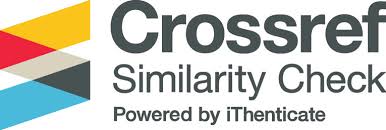ANALISIS PERHITUNGAN POTENSI PAJAK DAERAH KABUPATEN/KOTA DENGAN METODA STOCHASTIC FRONTIER ANALYSIS (SFA)
DOI:
https://doi.org/10.33827/akurasi2022.vol4.iss2.art173Keywords:
Pendapatan Daerah, PAD, Pajak Daerah, Potensi Pajak Daerah, Stochastic Frontier AnalysisAbstract
To increase local tax revenues, the initial steps that need to be done by local governments is to estimate their local tax potential. By using the Stochastic Frontier Analysis (SFA) method, this study tries to: (1) estimates local tax potential from each region/city and answer the question (2) have each of the regions reached its maximum potential? The results of this study aim to provide an alternative model/method of calculating the local taxes potential for a local government. In addition, for the central government, the local tax potential figures will be used as the fiscal capacity component instead of revenues realization in General Allocation Fund (DAU) formulation. The results from the SFA method are: (1) from the 504 local governments, on average, the Actual Tax Ratio (TRA) is 0.37%, while the Potential Tax Ratio (TRP) is 0.48 %. So only about 73.31% of local tax potential can be collected by the local governments. (2) The majority of the top ten ranked local governments that have the largest TRP, are local governments with an urban character and tourist areas, with a TRA range between 1.48% to 6.72%, and a TRP between 1.78% to 7.66%. So that the local tax potential that has been collected is about 80%. (3) On the bottom rank regions that have the lowest TRP, 8 out of 10 local governments are located in Papua with TRA ranges between 0.01% to 0.06% and TRP between 0.02% to 0.11%. So that the local tax potential that has been collected is in the range of 32% to 83%.







